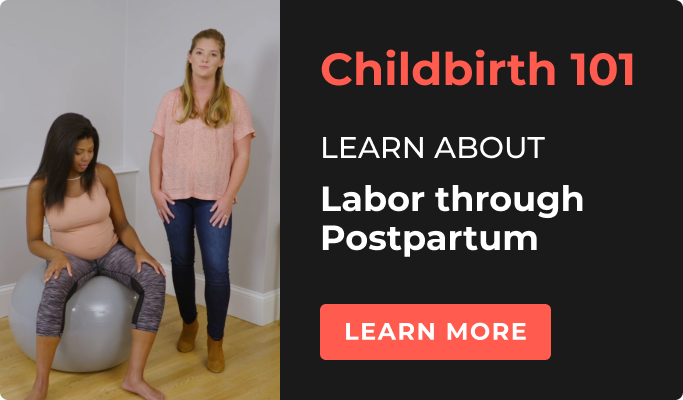There comes a time in your pregnancy when you have the sudden realization that you will actually have to give birth to that baby you’ve been carrying for the last 9 months. And, whether it’s your first or fourth baby, that can cause some anxiety. The best way to overcome that anxiety is to be prepared. Luckily our Childbirth 101 online course will give you the tools you need to go into labor and delivery with confidence.
Aside from understanding what your body will physically go through during childbirth, one of the most important things you can do is establish a list of birth preferences: A simple clear statement of your wishes & goals for the birth of your baby. Some may refer to this as a “birth plan,” but let's face it, babies don’t stick to plans. The goal is to provide you and your partner with an effective tool you can use when discussing details and options with your healthcare provider. And, if something unexpected were to happen, having these preferences allows you to weigh the options available to you and stay engaged and informed during the birthing process. So, here are the 9 most important decisions you should make before you go into labor:
Think about your birth environment — what is the atmosphere you would like to establish? Do you prefer dim lighting or bright? Would you like aromatherapy? How about music? These choices will help develop an environment that you are most comfortable and relaxed in during labor.
Decide which birthing tools you’d like to have available. Whether it’s a mirror, peanut or yoga ball, squat bar, or other items you might find helpful, birthing tools are a great way to help progress and push through the pain of labor.
What pain management options would you like to use or avoid? You have the choice between: Unmedicated, Epidural, Nitrous Oxide, IV pain medicine, Relaxation and Breathing techniques, the use of a shower or tub, or a combination of them — it’s important to research the different methods of pain relief available to you and decide what you’re ideal choice will be.
Would you like to be free to move around? Remember, your method of pain management could affect your ability to do this.
When you are pushing, would you like coaching? Some people do well with their partner, doctor, or other support person, guiding them through the pushing process. Others would prefer to just listen to their bodies. No matter your preference, discuss it with your support person/people, before the big day.
If you have a cesarean birth... would you prefer dim lighting? A quiet atmosphere? A clear or solid drape? Immediate skin to skin with your baby? Just because you are having a cesarean birth, doesn’t mean all your preferences go out the window. Think about this option, and make your preferences known.
How would you like to handle the umbilical cord? After birth, there are a few options for handling the baby’s umbilical cord. You must choose between immediate and delayed cord clamping. Immediate as the name suggests, is when the doctor or support person cuts the cord right after the baby is born. Delayed cord clamping is when doctors don’t immediately clamp and cut the umbilical cord, allowing extra time for the blood in the cord and placenta to flow to the baby.
Also, if you have decided to use cord blood banking (another decision to make beforehand!), let your provider know so they can collect it.
After birth, what do you want the baby's first hours & days to look like? Some of the first decisions you will make for your little one will happen quickly after birth. Decide if you’d like to do skin to skin immediately, if your baby will be staying in the room with you or in the nursery, if you’d like to have the first bath in the hospital or when you get home, and if you’ll be circumcising your baby.
What are your feeding preferences for your baby? Do you plan to try breastfeeding, or are you planning to formula feed? A combination of both? This choice is one only you and your partner can decide on. Knowing this before you are in the hospital will help you stand firm on your decision after birth.
If you plan to breastfeed, packing a manual pump, a nursing bra, and a nipple shield can be helpful. If you plan to formula feed, research which formula and bottles you would like to use before going into labor.
We want you to go into labor feeling confident about birth. If you're feeling unprepared, our Childbirth 101: From Labor through Postpartum, online course covers everything you need to know about the final days of pregnancy, the phases of labor, what to expect in the first hours and days after birth, and a deep-dive on the postpartum experience. We also provide a birth preferences worksheet to help guide you through your decisions along the way, give you tips from a renowned Doula on how to advocate for yourself during labor, expert tips on pain management, and demonstrations of the best pushing positions to reduce tearing (and which are available to you depending upon your choice of pain management).




